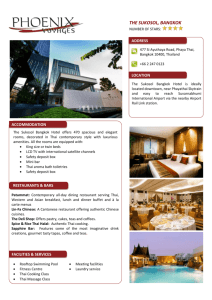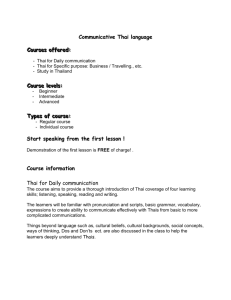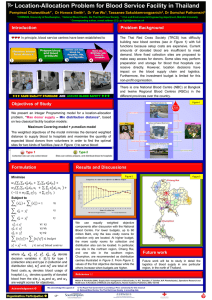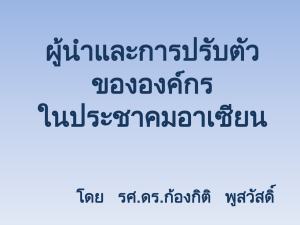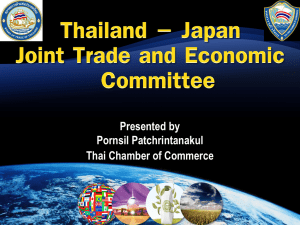TRANSNATIONALIZATION AND CONTEMPORARY ARCHITECTURE
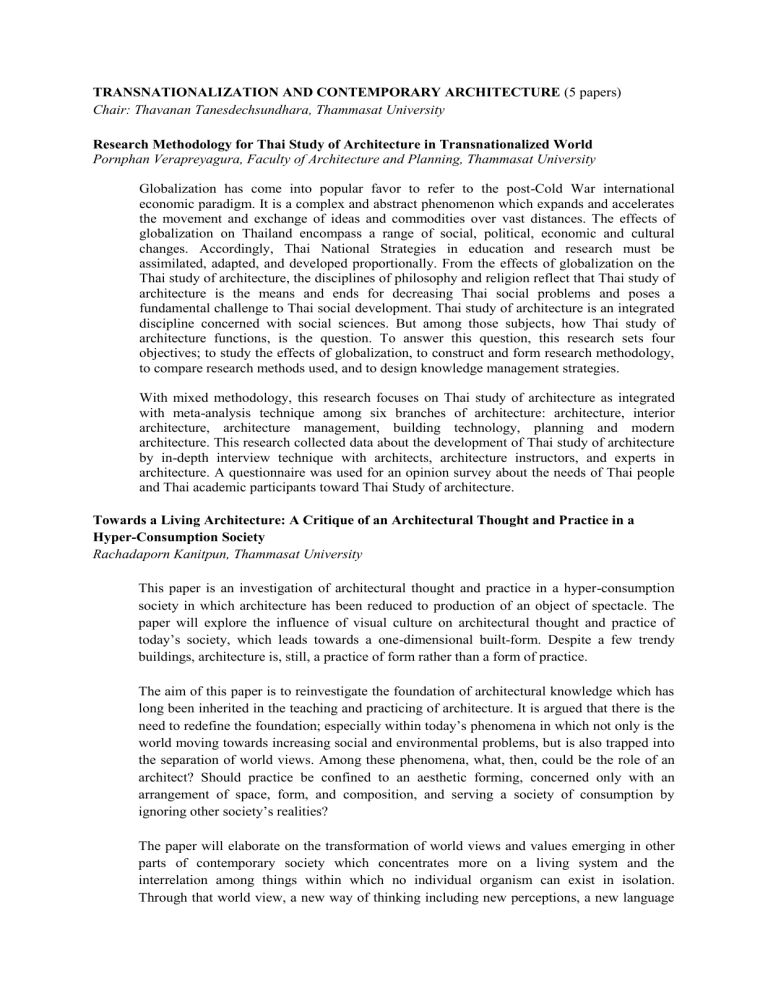
TRANSNATIONALIZATION AND CONTEMPORARY ARCHITECTURE (5 papers)
Chair: Thavanan Tanesdechsundhara, Thammasat University
Research Methodology for Thai Study of Architecture in Transnationalized World
Pornphan Verapreyagura, Faculty of Architecture and Planning, Thammasat University
Globalization has come into popular favor to refer to the post-Cold War international economic paradigm. It is a complex and abstract phenomenon which expands and accelerates the movement and exchange of ideas and commodities over vast distances. The effects of globalization on Thailand encompass a range of social, political, economic and cultural changes. Accordingly, Thai National Strategies in education and research must be assimilated, adapted, and developed proportionally. From the effects of globalization on the
Thai study of architecture, the disciplines of philosophy and religion reflect that Thai study of architecture is the means and ends for decreasing Thai social problems and poses a fundamental challenge to Thai social development. Thai study of architecture is an integrated discipline concerned with social sciences. But among those subjects, how Thai study of architecture functions, is the question. To answer this question, this research sets four objectives; to study the effects of globalization, to construct and form research methodology, to compare research methods used, and to design knowledge management strategies.
With mixed methodology, this research focuses on Thai study of architecture as integrated with meta-analysis technique among six branches of architecture: architecture, interior architecture, architecture management, building technology, planning and modern architecture. This research collected data about the development of Thai study of architecture by in-depth interview technique with architects, architecture instructors, and experts in architecture. A questionnaire was used for an opinion survey about the needs of Thai people and Thai academic participants toward Thai Study of architecture.
Towards a Living Architecture: A Critique of an Architectural Thought and Practice in a
Hyper-Consumption Society
Rachadaporn Kanitpun, Thammasat University
This paper is an investigation of architectural thought and practice in a hyper-consumption society in which architecture has been reduced to production of an object of spectacle. The paper will explore the influence of visual culture on architectural thought and practice of today’s society, which leads towards a one-dimensional built-form. Despite a few trendy buildings, architecture is, still, a practice of form rather than a form of practice.
The aim of this paper is to reinvestigate the foundation of architectural knowledge which has long been inherited in the teaching and practicing of architecture. It is argued that there is the need to redefine the foundation; especially within today’s phenomena in which not only is the world moving towards increasing social and environmental problems, but is also trapped into the separation of world views. Among these phenomena, what, then, could be the role of an architect? Should practice be confined to an aesthetic forming, concerned only with an arrangement of space, form, and composition, and serving a society of consumption by ignoring other society’s realities?
The paper will elaborate on the transformation of world views and values emerging in other parts of contemporary society which concentrates more on a living system and the interrelation among things within which no individual organism can exist in isolation.
Through that world view, a new way of thinking including new perceptions, a new language
and new concepts in several disciplines including science, sociology, and economics are opened up.
Thai Dwelling Place: A Reference to Suspicious Domain
Supakit Yimsrual, University of Sheffield
Traditionally, Thai domestic architecture has been considered an
‘auspicious domain’
.
Various kinds of traditional practices have assisted Thais create ‘auspiciousness’ , and establish their domain as a device of domestic sanctification to prevent danger, bad luck, and to promote domestic well being and prosperity. The rapid progression of modernity has significantly altered the socio cultural meanings of the Thai concept of dwelling. This has caused the disappearance of Thai vernacular architecture and the discard of traditional practices. This study is principally concerned with Thai domestic domain in contemporary
Thai society and bases its analysis on the philosophical background of Thai dwellings. Its aim is to elucidate how Thais generate ‘auspiciousness’ in their domestic space, and how this aspect specifies the building forms, symbolic representations, spatial organization, patterns of use, and meanings of Thai dwelling places. Although the modification has resulted in the changing of physical appearances of Thai domestic domain, the traditional aspects of auspicious domain still remain in Thai people’s ideology.
This paper illustrates some evidence and provides an interpretation of this underlying aspect of dwelling. The concept of classification, opposition, purity and sanctification, human body, prohibitive rules, religious and traditional belief in spiritual and uncanny powers is revealed towards the concept of auspicious domain. Therefore, it has not only been manifested in the resident’s experience of dwelling but has also manipulated the organization of space, built forms, patterns of use and meanings of their houses. Thais constantly reuse and reinterpret these practices to maintain ‘auspiciousness’ in their domestic sphere.
Mega Store: The Capitalist Architecture, State Power and Local Thai Communities
Thosaporn Sodabunlu, King Mongkut Institute of Technology Ladkrabang
The Mega Store; an enormous international retail department store, had been established in
Thai society since the 1990s. The concept of mega stores combine qualities of supermarket and department stores together to provide convenient facilities for city customers. For several years, the quantities of mega stores as well as their market shares in Thai society has rapidly been increasing.
Today, the physical architectural form of big air-conditioned international warehouses of several mega store brands has affected local retail markets in Thai societies from cities to local communities. There is no efficient state power for protecting state benefits and local communities until now. This has resulted in protests against the construction of mega stores in several provinces.
Under the increase of mega store phenomenon in Thai societies, problems have occurred to local Thai communities and need to be sorted out.
His Majesty King Bhumibol Adulyadej’s Development through Built Environment in Thailand
Wanida Supaporn, Thammasat University
Throughout his reign of more than sixty years, His Majesty King Bhumibol Adulyadej has dedicated his efforts to many royal initiative development projects, which mostly are built environment development. This research presents findings about His Majesty’s development through built environment, drawn from researching two objectives: 1) To study the context and categorize various developments through built environment in which His Majesty has been involved; and 2) To propose an overview of His Majesty’s development over 60 years of his reign by analyzing periods in His Majesty’s built environment development.
The study is mainly approached by documentary collection and structured interviews with 4 project co-operators. The research finds that His Majesty’s development through built environment can be sorted in five categories: 1) architecture; 2) community facilities related to public health buildings and education centers; 3) utilities in waste water treatment; 4) land use planning and reserving green areas; and, 5) regional planning in solving transportation and flooding problems. The study shows that there are four periods of His Majesty’s development through built environment. In the 1 st period, 1951-1961,the focus was on public health facilities and development through royal architecture. The 2 nd period, 1957-1980, the development was creating education centers, royal architecture in local areas and land use planning. The 3 rd period, 1957-present, development has focused on environmental issues, such as reserving green area, providing utilities in waste water treatment and planning for flood prevention. Lastly, the 4 th period, 1991-2000, His Majesty initiated developments through regional planning in transportation.
Notes:
1.
กรุณาถอดเครื่องหมายดอกจันออกจากทุกบทความ
2.
